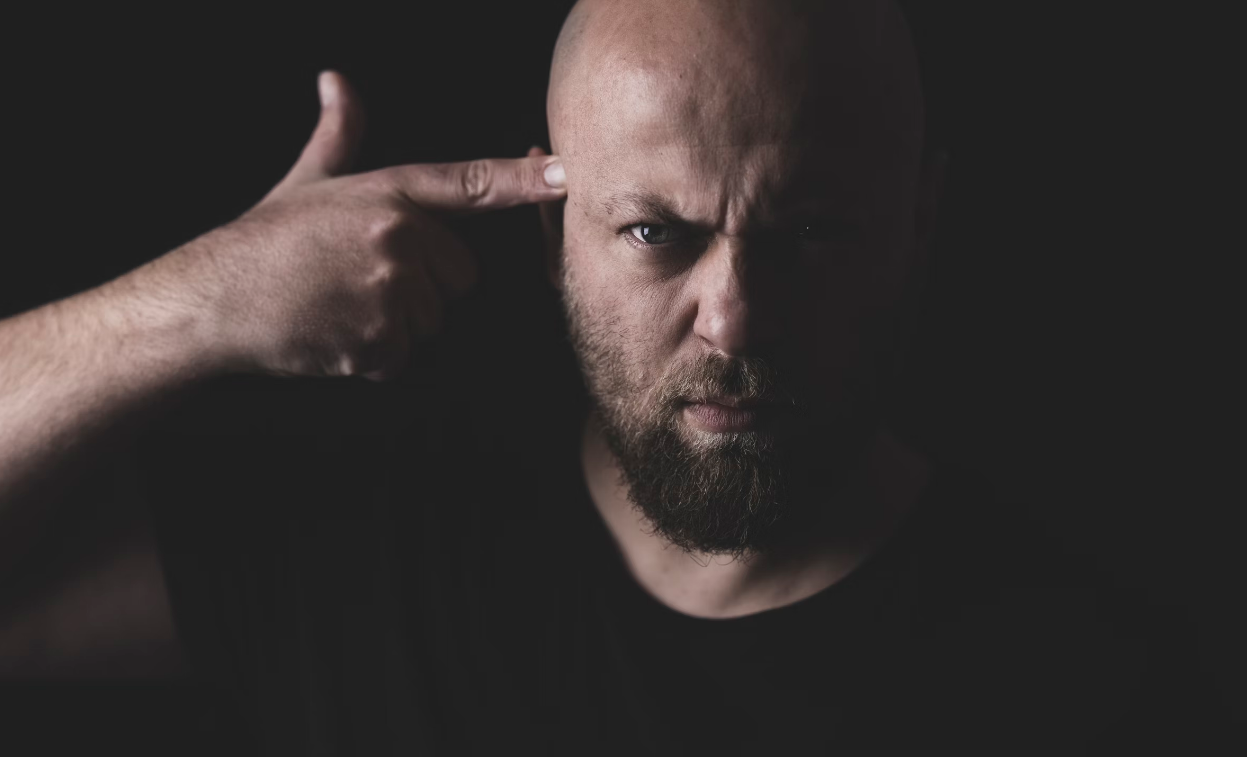I have been a marriage and family therapist for more than fifty years. One of the greatest tragedies I am seeing today is the rise of midlife divorce with women initiating nearly 80{e60f258f32f4d0090826105a8a8e4487cca35cebb3251bd7e4de0ff6f7e40497} of the divorces.[i] Divorce can be devastating for both men and women, but contrary to popular perception, men suffer greater emotional wounding. I believe strongly that divorce is not the answer and most midlife marriages can be saved.
The National Center for Family & Marriage Research (NCFMR), Co-directed by researchers Susan L. Brown and Wendy D. Manning, was established in 2007 to help improve our understanding of how family structure is linked to the health and well-being of children, adults, families, and communities. Dr. Brown’s recent article, “The Graying of Divorce: A Half Century of Change,” offers the following facts.
- People over 50 are divorcing in record-breaking numbers, and three to four-family generations feel the effects.
- Between 1990 and 2010, the divorce rate for U.S. married couples over 50 doubled and was even higher for couples aged 65 and older.
- One in four persons who divorce in the U.S. is over 50, contrasted to less than one in ten in 1990.
- More than half of gray divorces are couples in their first marriages, including more than 55 percent for couples married more than 20 years.
- Divorce can be financially depleting. Women 50 and older experience a 45{e60f258f32f4d0090826105a8a8e4487cca35cebb3251bd7e4de0ff6f7e40497} decline in their standard of living; for men it’s 21{e60f258f32f4d0090826105a8a8e4487cca35cebb3251bd7e4de0ff6f7e40497}.
- Baby Boomers are particularly vulnerable since they have a high rate of divorce and many went on to remarry. Second and third marriages have an even higher rate of divorce than first marriages (I know. Both my wife and I had been married and divorced twice, before we married. Third time was the charm).
- As the divorce rate for adults over 50 soars, so does the number of adult children experiencing parental divorce.
- In their book Second Chances, Wallerstein and Blakeslee assert, “Divorce is deceptive. Legally it is a single event, but psychologically it is a chain — sometimes a never-ending chain — of events, relocations, and radically shifting relationships strung through time, a process that forever changes the lives of the people involved.”
The causes for divorce are varied. Each one is a personal tragedy for the people involved, but also for their children (including their adult children) and can ripple through many generations. No one says to their partner,
“I’m happily married. I love us and the partnership we’ve created. I want a divorce.”
I suffered as a child when my own parents divorced following my mid-life father’s increasing irritability, anger, depression, and despair when I was five years old. I grew up vowing that it wouldn’t happen to me, but it did. Being a marriage and family counselor did not prevent me from having my own struggles that eventually led to divorce.
Fortunately, I got help, learned why marriages succeed and fail, and what I could to ensure success. It hasn’t always been easy, but my wife, Carlin, and I have been happily married for forty-four years now. I have detailed what we learned and what can be most helpful to you in my book, The Enlightened Marriage: The 5 Transformative Stage of Relationships and Why the Best is Still to Come. I have also developed an online course, “Navigating the 5 Stages of Love,” that draws on the main issues I share with my private counseling clients.
We all want real, lasting love, whether we are in our 20s, 30s, 40s, 50s, or beyond. Yet too many relationships fall apart, just when the couple could be enjoying their marriage the most. Most people don’t know why. They become disillusioned, frustrated, and lost. They have fallen out of love and mistakenly believe that they have chosen the wrong partner. After going through the grieving process, they start looking again; but often, their efforts end up in disappointment.
The 5 Secrets For Finding Keeping Your Marriage Alive and Well
Have you ever wondered why finding the right partner and having a marriage that last through time and is passionate, nurturing, loving, and joyful has been so difficult?
Are you in a relationship that started off great, but seems to have lost something vital?
Are you in a mid-life relationship that could use some help? (My colleague, Chip Conley, author of Learning to Love Midlife: 12 Reasons Why Live Gets Better with Age, says with our increasing longevity midlife extends from age 35 to 75).
Here are five secrets for a healthy marriage that lasts and gets better through time.
Secret #1: There are 5 Stages of Love Not Just Two.
Many of us have come to believe that finding the right person (Stage 1) is the most important stage (Hence all the programs and dating sites that promise to help you find your soul mate). Once you’ve found that special someone, Stage 2 begins and you build a life together. We are told we are then entitled to live happily ever after. But that is not the case for most of us. Here are the 5 Stages I describe in my book, The Enlightened Marriage.
- Stage 1: Falling In Love
- Stage 2: Becoming a Couple
- Stage 3: Disillusionment
- Stage 4: Creating Real, Lasting Love
- Stage 5: Using the Power of Two to Change the World
Most marriages that fail do so when one, or both partners, become disillusioned.
“Is this all there is? I need more. I’m tired working to make things better and I don’t want to remain in a hollow marriage.”
But disillusionment is not only a feeling, but an actual stage of marriage that can be understood and successfully navigated.
Secret #2: Stage 3, Disillusionment, is Not the Beginning of the End But the Entre to Real Lasting Love.
If we believe there are only two stages for having the relationship we’ve always wanted when things start to go south we ignore the signs or wear ourselves out trying to fix things. When things don’t get fixed we often blame ourselves or our partner and feel we must get out of the relationship because it seems that no matter what we do, things don’t get better.
There is an old saying that can help us at this point,
“When you’re going through hell, don’t stop.”
Most people either remain stuck in their pain or wear down and want to bail out. What is called for here is support and guidance to keep going deeper. One of the most important things I teach people when they come to me for counseling is how to understand the value of Stage 3.
Secret #3: Stage 3 Teaches Us to Get Real.
Falling in love is by necessity deceptive. We so want to find that right person, we all project our unmet needs and desires on them. We don’t see the real person, we see what we want and hope to see. We don’t fully share our real selves. We share the parts of ourselves we think will be most attractive to a potential partner.
As we get older and we spend more time in our marriages, we often become more and more afraid to reveal our true selves, speak about our real needs and desires. Men often ignore the warning signs or see the signs but never really know what to do to fix things. Little by little the disillusionment builds up and often leads to divorce if a couple doesn’t get help.
In Stage 3 we learn to recognize our projections and take the risk to slowly reveal who we really are and accept the gift of who our partner really is. We also recognize that there are unhealed wounds from our past relationships, most importantly from our first relationships—the ones we had growing up in our first family with our parents. We must get real with our past in order to have the future we all want.
The famous psychiatrist Carl Jung said,
“The privilege of a lifetime is to become who you truly are.”
This is never an easy task. Stage 3, if we can get help navigating it successfully, can help us release the illusions that keep us from our true selves.
Secret #4: We All Have Faulty Love Maps That Must Be Corrected.
Most of us grew up in families where we got a distorted map of what real lasting love was all about. There were beliefs about ourselves and others that were implanted in our brains and became mostly unconscious. We were implanted with internalized messages that told us things like:
- I am not safe.
- I am worthless.
- I am powerless.
- I am not lovable.
- I cannot trust anyone.
- I am bad.
- I am on my own.
Or we see our partner through the lens of these unhelpful belief systems.
Do you recognize some of these beliefs in your own marriage?
Secret #5: Real Lasting Love Requires Three Necessary Ingredients.
Most of us have no idea how to nourish a healthy relationship through all the challenges we face as we age. It’s as though we are given a beautiful and rare flower, but we mistakenly give it too much water or not enough. I thought all I needed to do when I got married was to be a good provider and refrain from being mean and nasty (Oh, and remember to shower regularly). But it took me a long time to learn the simple, yet necessary ingredients for real lasting love to flourish.
Psychologist, Dr. Sue Johnson, offers guidance in her book, Hold Me Tight: Seven Conversations for a Lifetime of Love. She helps us remember these three ingredients with one simple word: ARE.
- A is for Accessibility: Can we reach each other? This means staying open to your partner even when you are tired, hurt, or insecure. Answering “yes” to questions like: Can I get my partner’s attention easily? Is my partner easy to connect with emotionally?
- R is for Responsiveness: Can we rely on each other to respond to our emotional needs? Answering “yes” to questions like: If I need connection and comfort, will you be there for me? Does my partner respond positively to my signals that I need them to come close?
- E is for Engagement: Do we trust our partner to value us and stay close even when we are out of sync with each other? Answering “yes” to questions like, Do I feel very comfortable being close to and trusting my partner? If we are apart, can I trust that we are still connected and cared for?
Most of us didn’t learn how to give and receive real lasting love. We forget that like food, we need these three types of nourishment often, many times a day. A big splurge on anniversaries and special occasions never makes up for what we miss if we don’t get these regular gifts of love every day.
Divorce is not the answer because we know that these skills can be taught. I believe it is never too late to have a happy marriage. And most midlife marriages are worth saving.
I am planning to offer a course called “Divorce is Not the Answer: How to Save Your Midlife Marriages,” but I’d like to hear from you. If you would be interested in attending please drop me a note to Jed@MenAlive.com and let me know. Please put “Divorce is Not the Answer” in the subject line.
[i] Professor Scott Galloway, Divorce, https://www.profgalloway.com/divorce/




